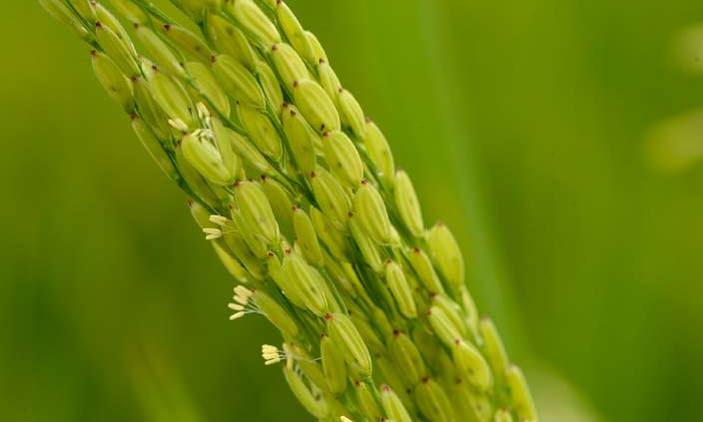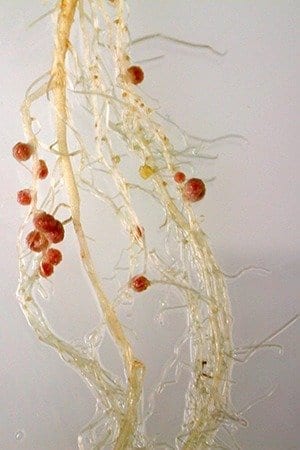
Rice-growing techniques learned through thousands of years of trial and error are about to be turbocharged with DNA technology in a breakthrough hailed by scientists as a potential second “green revolution”.
Over the next few years farmers are expected to have new genome sequencing technology at their disposal, helping to offset a myriad of problems that threaten to curtail production of the grain that feeds half of humanity.
Drawing on a massive bank of varieties stored in the Philippines and state-of-the-art Chinese technology, scientists recently completed the DNA sequencing of more than 3,000 of the world’s most significant types of rice.
With the huge pool of data unlocked, rice breeders will soon be able to produce higher-yielding varieties much more quickly and under increasingly stressful conditions, scientists involved with the project told AFP.
Other potential new varieties being dreamt about are ones that are resistant to certain pests and diseases, or types that pack more nutrients and vitamins.
“This will be a big help to strengthen food security for rice eaters,” said Kenneth McNally, an American biochemist at the Philippines-based International Rice Research Institute (IRRI).
Since rice was first domesticated thousands of years ago, farmers have improved yields through various planting techniques.
For the past century breeders have isolated traits, such as high yields and disease resistance, then developed them through cross breeding.
However, they did not know which genes controlled which traits, leaving much of the effort to lengthy guesswork.
The latest breakthroughs in molecular genetics promise to fast-track the process, eliminating much of the mystery, scientists involved in the project told AFP.
Better rice varieties can now be expected to be developed and passed on to farmers’ hands in less than three years, compared with 12 without the guidance of DNA sequencing.
Genome sequencing involves decoding DNA, the hereditary material of all living cells and organisms. The process roughly compares with solving a giant jigsaw puzzle made up of billions of microscopic pieces.
A multinational team undertook the four-year project with the DNA decoding primarily in China by BGI, the world’s biggest genome sequencing firm.
Leaf tissue from the samples, drawn mostly from IRRI’s gene bank of 127,000 varieties were ground by McNally’s team at its laboratory in Los Banos, near Manila’s southern outskirts, before being shipped for sequencing.
A non-profit research outfit founded in 1960, IRRI works with governments to develop advanced varieties of the grain.
Threats to rice
Farmers and breeders will need the new DNA tools, which scientists take pains to say is not genetic modification, because of the increasingly stressful conditions for rice growing expected in the 21st Century.
While there will be many more millions to feed, there is expected to be less land available for planting as farms are converted for urban development, destroyed by rising sea levels or converted to other crops.
Rice-paddy destroying floods, drought and storms are also expected to worsen with climate change. Meanwhile, pests and diseases that evolve to resist herbicides and pesticides will be more difficult to kill.
And fresh water, vital for growing rice, is expected to become an increasingly scarce commodity in many parts of the world.
As scientists develop the tools necessary to harness the full advantages of the rice genome database, the hope is that new varieties can be developed to combat all those problems.
“Essentially, you will be able to design what properties you want in rice, in terms of the drought resistance, resistance to diseases, high yields, and others,” said Russian bioanalytics expert and IRRI team member Nickolai Alexandrov.
Food revolution
Scientists behind the project hope it will lead to a second “green revolution”.
Learn more: DNA rice breakthrough raises ‘green revolution’ hopes
The Latest on: Green revolution
[google_news title=”” keyword=”green revolution” num_posts=”10″ blurb_length=”0″ show_thumb=”left”]
via Google News
The Latest on: Green revolution
- Join the green revolution lead the Somer Valley Rediscovered partnershipon May 9, 2024 at 7:25 am
Here’s your chance to chair the Somer Valley Rediscovered Partnership, enhancing local biodiversity and connecting communities to nature ...
- HFT Scan : Kokyo Camlin and Retro Green Revolution in focuson May 9, 2024 at 5:02 am
High-frequency trading was active in Kokyo Camlin, Retro Green Revolution, and Sonalis Consumer Products on May 8. Sonalis Consumer Products closed higher. High-frequency trading firms (HTFs) – or ...
- 2024 Green Revolution Summit brings travel heavyweights into green fuel discussionon May 8, 2024 at 6:37 pm
Tourism, transport and aviation leaders will gather in Sydney next week to discuss the urgent need to develop a local ‘green fuel’ sector.
- HFT Scan : Kokuyo Camlin and Retro Green Revolution in focuson May 8, 2024 at 6:03 pm
High-frequency trading firms (HTFs) – or algo firms on steroids –use complex algorithms and powerful computers to execute trades at lightning speeds.
- Skilled labour shortage is stunting our green revolutionon May 8, 2024 at 7:56 am
Wind, hydrogen, solar and hydro have been wholeheartedly taken up by Britons as we transition towards a low-carbon future and reap the benefits of home-grown energy. Of these clean, green machines, it ...
- How AI and data can bring another green revolution in Indiaon May 8, 2024 at 4:19 am
India faces environmental challenges in agriculture, but AI offers transformative solutions. Precision farming, empowered by AI and big data, optimizes resources and boosts yields sustainably. With ...
- Green revolution: Girard Melancon’s pathway to sustainable careerson May 7, 2024 at 10:21 am
Equity in Focus speaks with Girard Melancon, a visionary in workforce development, about the power of green jobs in the future economy.
- Alice-SES Spearheads a Green Revolution in Finance: Investing with a Conscienceon April 29, 2024 at 4:51 am
In a bold move that sets it apart from traditional financial service providers, Alice-SES has announced a groundbreaking initiative to couple financial investments with environmental stewardship in ...
- Green Revolution 2.0: Scientists Use AI To Create Carbon-Capturing Plantson April 27, 2024 at 3:54 pm
A unique partnership at Salk leverages the deep learning software known as SLEAP to study plant characteristics, speeding up the development of plants that can combat climate change. The Intergovernme ...
- Retro Green Revolution Ltd Share Priceon April 15, 2024 at 5:00 pm
Retro Green Revolution Ltd share price was down by -4.55% from the previous closing price of ₹8.80. Who are peers of Retro Green Revolution Ltd? The peers of Retro Green Revolution Ltd are Tata ...
via Bing News










